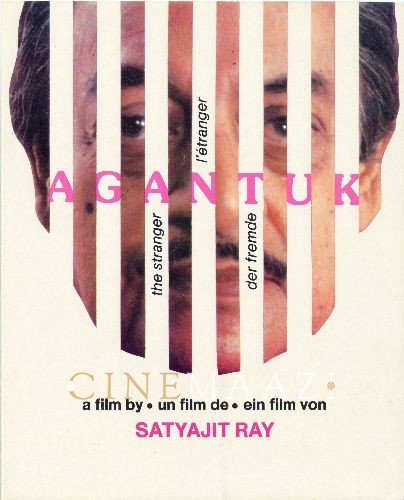Ajit Banerjee
Subscribe to read full article
This section is for paid subscribers only. Our subscription is only $37/- for one full year.
You get unlimited access to all paid section and features on the website with this subscription.
Not ready for a full subscription?
You can access this article for $2 , and have it saved to your account for one year.
- Born: 1924 (Calcutta)
- Primary Cinema: Hindi
Finding the perfect balance between aesthetic expression and fidelity to narrative is difficult when it comes to art direction in cinema. Ajit Banerjee’s work is a rare instance in which such equilibrium is achieved.
Born in Calcutta in 1924, he trained in an art school for three years after his matriculation. He was adept at painting but his passion lay in films. Fortune smiled on him and he was offered the position of an assistant editor in the film Tathapi (1950). He shifted to Bombay in 1953 hoping to find work as an art director. He first found work in Garm Coat (1955). He continued to work as an assistant director in a number of Bimal Roy films. He became an assistant to Hrishikesh Mukherjee in Musafir(1957). His first assignment as an art director was Anuradha (1960). He was the art director for K A Abbas’s National Award winning drama Shehar Aur Sapna (1963).
A prolific and lauded art director, Ajit Banerjee is primarily known for his career-long association with Hrishikesh Mukherjee (who was also his brother-in-law). Beginning with Anuradha they created some of Hindi cinema’s most beloved frames together. Banerjee’s understated style in design was perfectly complementary to Hrishikesh Mukherjee’s rejection of spectacle in favour of narrative-driven cinema. His eloquent construction of spaces was adept at enhancing Mukherjee’s detailed characters. He brought a rustic realism to the space of Majhli Didi (1967) which highlighted the plight of Meena Kumari’s Hemangini. He deftly managed the difficulty of shooting a complex film like Anokhi Raat (1968), letting the story breathe, yet filling the mise-en-scene with a claustrophobic grandeur. He was awarded the Filmfare Award for Best Art Director (B & W) for both these efforts.
Due to Hrishikesh Mukherjee’s chronic arthritis, many of his films post the seventies had to be shot in his own house. Ajit Banerjee dexterously transformed many of the rooms in the mansion ‘Anupama’ into film sets. Their long and fruitful collaboration gave Hindi cinema some unforgettable classics like Aashirwad (1968), Satyakam (1969), Anand (1971), Bawarchi (1972), Abhimaan (1973), Chupke Chupke (1975), Gol Maal (1979) and many more. His style also fit in well with Gulzar’s poignant dramas like Koshish (1972), Parichay (1972), Aandhi (1975), Mausam (1975) and Namkeen (1982). He received his third Filmfare award for his picturesque work in Namkeen. A man of wide range, Banerjee’s association with the more intimate style of cinema did not prevent him from working in mainstream pot-boilers like Satte Pe Satta (1982). Ajit Banerjee’s work exemplified the idiom ‘less is more’ in the field of cinematic production design.
-
Filmography (1)
SortRole
-

Agantuk 1991
-









.jpg)



